What's Inside: Life Science | Series Made Simple Spring 2011
 Read Series Made Simple, School Library Journal's guide to the latest series nonfiction
Read Series Made Simple, School Library Journal's guide to the latest series nonfiction
The wide range of topics, treatments, and reading levels in these life sciences series makes selection both interesting and challenging. Traditional layouts still reign for the youngest readers and in some reference-style volumes. It’s mainly in the intermediate and middle school series that layouts reflect readers’ more sophisticated visual tastes and editors’ efforts to satisfy them. Unfortunately that is where problems often appear. In the rush to incorporate more visual matter, inconsistencies and inaccuracies occur. These are insidious, appearing throughout many of the series and requiring close inspection and careful selection not only this spring but always.
Preschool—Grade 4
 BALLARD, Carol. What Happens to Broken Bones?: Bones. chart. ISBN 978-1-4109-4011-7; ISBN 978-1-4109-4022-3. LC 2010024673. ————. What Is An Asthma Attack?: Respiration. ISBN 978-1-4109-4012-4; ISBN 978-1-4109-4023-0. LC 2010024675. ————. What Is My Pulse?: Blood and Circulation. ISBN 978-1-4109-4013-1; ISBN 978-1-4109-4024-7. LC 2010024676. ————. Why Do I Need Glasses?: Vision. ISBN 978-1-4109-4010-0; ISBN 978-1-4109-4021-6. LC 2010024671. FULLICK, Ann. Why Do My Ears Pop?: Hearing. ISBN 978-1-4109-4016-2; ISBN 978-1-4109-4027-8. LC 2010024682. PARKER, Steve. How Do My Braces Work?: Teeth. ISBN 978-1-4109-4019-3; ISBN 978-1-4109-4030-8. LC 2010024805. ————. How Do My Muscles Get Strong?: Muscles and Exercise. chart. ISBN 978-1-4109-4017-9; ISBN 978-1-4109-4028-5. LC 2010024800. ————. Why Does This Bug Bite Itch?: Skin and Healing. ISBN 978-1-4109-4018-6; ISBN 978-1-4109-4029-2. LC 2010024804. THOMAS, Isabel. Why Do I Burp?: Digestion and Diet. ISBN 978-1-4109-4014-8; ISBN 978-1-4109-4025-4. LC 2010024679. ————. Why Do I Have Periods?: Menstruation and Puberty. ISBN 978-1-4109-4015-5; ISBN 978-1-4109-4026-1. LC 2010026827. ea vol: 32p. (Inside My Body Series). diags. illus. photos. further reading. glossary. index. Web sites. CIP. Raintree. 2011. PLB $29; pap. $7.99. Gr 4-6—These titles are organized by questions that introduce the body system, its function, and its care, but the questions are not stimulating. A final spread reviews the topic. Some subtitles don’t accurately reflect the content. Why Do I Burp barely covers diet, while How Do My Muscles Get Strong is mostly on exercise. In Why Do I Have Periods, the photo choices put a depressing spin on menstruation. Though the large illustrations, photographs, micrographs, and insets including “Practical Advice,” “Extreme Facts,” and “Science Behind the Myth” add variety, minor problems mar the illustrations in several titles. For example, one in Asthma Attack shows the heart on the wrong side of the body, and in Pulse, a doctor shown with a patient is not using a stethoscope as the caption states.
BALLARD, Carol. What Happens to Broken Bones?: Bones. chart. ISBN 978-1-4109-4011-7; ISBN 978-1-4109-4022-3. LC 2010024673. ————. What Is An Asthma Attack?: Respiration. ISBN 978-1-4109-4012-4; ISBN 978-1-4109-4023-0. LC 2010024675. ————. What Is My Pulse?: Blood and Circulation. ISBN 978-1-4109-4013-1; ISBN 978-1-4109-4024-7. LC 2010024676. ————. Why Do I Need Glasses?: Vision. ISBN 978-1-4109-4010-0; ISBN 978-1-4109-4021-6. LC 2010024671. FULLICK, Ann. Why Do My Ears Pop?: Hearing. ISBN 978-1-4109-4016-2; ISBN 978-1-4109-4027-8. LC 2010024682. PARKER, Steve. How Do My Braces Work?: Teeth. ISBN 978-1-4109-4019-3; ISBN 978-1-4109-4030-8. LC 2010024805. ————. How Do My Muscles Get Strong?: Muscles and Exercise. chart. ISBN 978-1-4109-4017-9; ISBN 978-1-4109-4028-5. LC 2010024800. ————. Why Does This Bug Bite Itch?: Skin and Healing. ISBN 978-1-4109-4018-6; ISBN 978-1-4109-4029-2. LC 2010024804. THOMAS, Isabel. Why Do I Burp?: Digestion and Diet. ISBN 978-1-4109-4014-8; ISBN 978-1-4109-4025-4. LC 2010024679. ————. Why Do I Have Periods?: Menstruation and Puberty. ISBN 978-1-4109-4015-5; ISBN 978-1-4109-4026-1. LC 2010026827. ea vol: 32p. (Inside My Body Series). diags. illus. photos. further reading. glossary. index. Web sites. CIP. Raintree. 2011. PLB $29; pap. $7.99. Gr 4-6—These titles are organized by questions that introduce the body system, its function, and its care, but the questions are not stimulating. A final spread reviews the topic. Some subtitles don’t accurately reflect the content. Why Do I Burp barely covers diet, while How Do My Muscles Get Strong is mostly on exercise. In Why Do I Have Periods, the photo choices put a depressing spin on menstruation. Though the large illustrations, photographs, micrographs, and insets including “Practical Advice,” “Extreme Facts,” and “Science Behind the Myth” add variety, minor problems mar the illustrations in several titles. For example, one in Asthma Attack shows the heart on the wrong side of the body, and in Pulse, a doctor shown with a patient is not using a stethoscope as the caption states.
 HOFFMAN, Mary Ann. Watch Apple Trees Grow. ISBN 978-1-4339-4816-9; ISBN 978-1-4339-4819-0. LC 2010038514. RAJCZAK, Kristen. Watch Corn Grow. ISBN 978-1-4339-4822-0; ISBN 978-1-4339-4825-1. LC 2010039140. ————. Watch Grass Grow. ISBN 978-1-4339-4827-5; ISBN 978-1-4339-4830-5. LC 2010039138. ————. Watch Tulips Grow. ISBN 978-1-4339-4845-9; ISBN 978-1-4339-4848-0. LC 2010038505. SHEA, Therese. Watch Peas Grow. ISBN 978-1-4339-4833-6; ISBN 978-1-4339-4836-7. LC 2010038503. ————. Watch Pine Trees Grow. ISBN 978-1-4339-4839-8; ISBN 978-1-4339-4842-8. LC 2010038502. ea vol: 24p. (Watch Plants Grow! Series). photos. CIP. Gareth Stevens. 2011. PLB $22.60; ebook $22.60. K-Gr 1—In these easy readers, each spread includes one or two sentences and a clear, attractive photograph that works well with the text. Most titles mention the seed or bulb, its propagation, basic plant structure, and some common uses. The brevity results in generalizations and gaps in information. Grass introduces wheat, assuming readers understand the connection, while Corn covers the vegetable in its own volume that doesn’t mention corn’s grass link. Both Tulips and Apple Trees show cultivation by seed though that is not customarily done. A two- or three-word glossary varies from title to title and includes photos, which sometimes feature arrows that indicate the part of the picture that corresponds to the word. Peas and Pine Trees are the strongest of these titles; the others aren’t worth purchasing.
HOFFMAN, Mary Ann. Watch Apple Trees Grow. ISBN 978-1-4339-4816-9; ISBN 978-1-4339-4819-0. LC 2010038514. RAJCZAK, Kristen. Watch Corn Grow. ISBN 978-1-4339-4822-0; ISBN 978-1-4339-4825-1. LC 2010039140. ————. Watch Grass Grow. ISBN 978-1-4339-4827-5; ISBN 978-1-4339-4830-5. LC 2010039138. ————. Watch Tulips Grow. ISBN 978-1-4339-4845-9; ISBN 978-1-4339-4848-0. LC 2010038505. SHEA, Therese. Watch Peas Grow. ISBN 978-1-4339-4833-6; ISBN 978-1-4339-4836-7. LC 2010038503. ————. Watch Pine Trees Grow. ISBN 978-1-4339-4839-8; ISBN 978-1-4339-4842-8. LC 2010038502. ea vol: 24p. (Watch Plants Grow! Series). photos. CIP. Gareth Stevens. 2011. PLB $22.60; ebook $22.60. K-Gr 1—In these easy readers, each spread includes one or two sentences and a clear, attractive photograph that works well with the text. Most titles mention the seed or bulb, its propagation, basic plant structure, and some common uses. The brevity results in generalizations and gaps in information. Grass introduces wheat, assuming readers understand the connection, while Corn covers the vegetable in its own volume that doesn’t mention corn’s grass link. Both Tulips and Apple Trees show cultivation by seed though that is not customarily done. A two- or three-word glossary varies from title to title and includes photos, which sometimes feature arrows that indicate the part of the picture that corresponds to the word. Peas and Pine Trees are the strongest of these titles; the others aren’t worth purchasing.
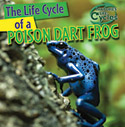 KINGSTON, Anna. The Life Cycle of a Pelican. ISBN 978-1-4339-4683-7; ISBN 978-1-4339-4686-8. LC 2010030692. ————. The Life Cycle of a Poison Dart Frog. ISBN 978-1-4339-4691-2; ISBN 978-1-4339-4694-3. LC 2010031281. ————. The Life Cycle of a Sea Turtle. ISBN 978-1-4339-4687-5; ISBN 978-1-4339-4690-5. LC 2010031282. LINDE, Barbara M. The Life Cycle of a Crocodile. ISBN 978-1-4339-4671-4; ISBN 978-1-4339-4674-5. LC 2010029687. ————. The Life Cycle of a Honeybee. ISBN 978-1-4339-4675-2; ISBN 978-1-4339-4678-3. LC 2010029688. ————. The Life Cycle of an Opossum. ISBN 978-1-4339-4679-0; ISBN 978-1-4339-4682-0. LC 2010030695. ea vol: 24p. (Nature’s Life Cycles Series). photos. further reading. glossary. index. Web sites. CIP. Gareth Stevens. 2011. PLB $22.60; ebook $22.60. Gr 2-4—This eclectic assortment of creatures showcases typical animal life cycles. Each title begins with background information about the genus’s appearance, eating habits and habitats, plus common species. Life cycle sections begin with mating habits. (Only Frog uses the term “fertilize” while the other titles use “mate.”) The cycle includes care and feeding, and growth and development, followed by adulthood. Closing pages report on the animal’s current status and include any special features such as “Poison” in Frogs and “Playing Dead” in Opossums. The cycle is recapped in a photo sequence. Captioned, full-page photographs and “Awesome Animal!” fact boxes add information.
KINGSTON, Anna. The Life Cycle of a Pelican. ISBN 978-1-4339-4683-7; ISBN 978-1-4339-4686-8. LC 2010030692. ————. The Life Cycle of a Poison Dart Frog. ISBN 978-1-4339-4691-2; ISBN 978-1-4339-4694-3. LC 2010031281. ————. The Life Cycle of a Sea Turtle. ISBN 978-1-4339-4687-5; ISBN 978-1-4339-4690-5. LC 2010031282. LINDE, Barbara M. The Life Cycle of a Crocodile. ISBN 978-1-4339-4671-4; ISBN 978-1-4339-4674-5. LC 2010029687. ————. The Life Cycle of a Honeybee. ISBN 978-1-4339-4675-2; ISBN 978-1-4339-4678-3. LC 2010029688. ————. The Life Cycle of an Opossum. ISBN 978-1-4339-4679-0; ISBN 978-1-4339-4682-0. LC 2010030695. ea vol: 24p. (Nature’s Life Cycles Series). photos. further reading. glossary. index. Web sites. CIP. Gareth Stevens. 2011. PLB $22.60; ebook $22.60. Gr 2-4—This eclectic assortment of creatures showcases typical animal life cycles. Each title begins with background information about the genus’s appearance, eating habits and habitats, plus common species. Life cycle sections begin with mating habits. (Only Frog uses the term “fertilize” while the other titles use “mate.”) The cycle includes care and feeding, and growth and development, followed by adulthood. Closing pages report on the animal’s current status and include any special features such as “Poison” in Frogs and “Playing Dead” in Opossums. The cycle is recapped in a photo sequence. Captioned, full-page photographs and “Awesome Animal!” fact boxes add information.
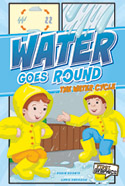 KNUDSEN, Shannon. Eggs, Legs, Wings: A Butterfly Life Cycle. illus. by Simon Smith. ISBN 978-1-4296-5367-1; ISBN 978-1-4296-6228-4. LC 2010029083. ————. Seed, Sprout, Fruit: An Apple Tree Life Cycle. illus. by Simon Smith. ISBN 978-1-4296-5366-4; ISBN 978-1-4296-6230-7. LC 2010029084. KOONTZ, Robin. Hide and Seek Moon: The Moon Phases. illus. by Chris Davidson. ISBN 978-1-4296-5365-7; ISBN 978-1-4296-6229-1. LC 2010030092. ————. Water Goes Round: The Water Cycle. illus. by Chris Davidson. ISBN 978-1-4296-5364-0; ISBN 978-1-4296-6231-4. LC 2010030093. ea vol: 24p. (First Graphics: Nature Cycles Series). diags. illus. further reading. glossary. index. Web sites. CIP. Capstone. 2011. PLB $22.65; pap. $5.95. Gr 2-4—These dual-purpose introductions to nature and to graphic texts include a how-to-read-panels diagram on their back covers. Information is presented in text boxes, word balloons, and labeled diagrams. Panels vary from vertical to horizontal; they occasionally fill full pages but are typically presented three per page. Moon and Water include two young children and their families in the illustrations, adding subtext but limiting their appeal to older reluctant readers. Minor quibbles include a confusing explanation of ground and surface water in Water and an unlabeled diagram of the osmosis process in Seed.
KNUDSEN, Shannon. Eggs, Legs, Wings: A Butterfly Life Cycle. illus. by Simon Smith. ISBN 978-1-4296-5367-1; ISBN 978-1-4296-6228-4. LC 2010029083. ————. Seed, Sprout, Fruit: An Apple Tree Life Cycle. illus. by Simon Smith. ISBN 978-1-4296-5366-4; ISBN 978-1-4296-6230-7. LC 2010029084. KOONTZ, Robin. Hide and Seek Moon: The Moon Phases. illus. by Chris Davidson. ISBN 978-1-4296-5365-7; ISBN 978-1-4296-6229-1. LC 2010030092. ————. Water Goes Round: The Water Cycle. illus. by Chris Davidson. ISBN 978-1-4296-5364-0; ISBN 978-1-4296-6231-4. LC 2010030093. ea vol: 24p. (First Graphics: Nature Cycles Series). diags. illus. further reading. glossary. index. Web sites. CIP. Capstone. 2011. PLB $22.65; pap. $5.95. Gr 2-4—These dual-purpose introductions to nature and to graphic texts include a how-to-read-panels diagram on their back covers. Information is presented in text boxes, word balloons, and labeled diagrams. Panels vary from vertical to horizontal; they occasionally fill full pages but are typically presented three per page. Moon and Water include two young children and their families in the illustrations, adding subtext but limiting their appeal to older reluctant readers. Minor quibbles include a confusing explanation of ground and surface water in Water and an unlabeled diagram of the osmosis process in Seed.
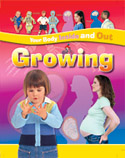 ROYSTON, Angela. Bones and Muscles. ISBN 978-1-59771-263-7. LC 2010003823. ————. Senses. ISBN 978-1-59771-267-5. LC 2010003827. ————. Teeth and Hair. ISBN 978-1-59771-268-2. LC 2010003863. SOLWAY, Andrew. Food and Digestion. ISBN 978-1-59771-264-4. LC 2010003824. ————. Growing. ISBN 978-1-59771-265-1. LC 2010003825. ————. Heart and Lungs. ISBN 978-1-59771-266-8. LC 2010003826. ea vol: 32p. (Your Body Inside and Out Series). diags. illus. photos. glossary. index. Web sites. CIP. Sea-to-Sea. 2011. PLB $28.50. Gr 2-4—This series has a consistent look with the same child models throughout. Each title provides basic information plus extensions for added interest and deeper understanding. For example, Senses begins with a general definition, and then looks at the brain and how it interprets information from the various sense organs. The individual senses are explained and then supplemental information is provided. In “Seeing,” sidebars cover blindness, color blindness, and wearing glasses. Throughout the series, simple vocabulary sometimes leads to generalizations and avoids more technical terms for common body parts. Bright colors, clearly labeled artwork, and silhouettes overlaid with diagrams of body structures add appeal. Occasional “Try This!” boxes with simple hands-on ideas reinforce concepts. Minor problems aside, these titles are worth considering.
ROYSTON, Angela. Bones and Muscles. ISBN 978-1-59771-263-7. LC 2010003823. ————. Senses. ISBN 978-1-59771-267-5. LC 2010003827. ————. Teeth and Hair. ISBN 978-1-59771-268-2. LC 2010003863. SOLWAY, Andrew. Food and Digestion. ISBN 978-1-59771-264-4. LC 2010003824. ————. Growing. ISBN 978-1-59771-265-1. LC 2010003825. ————. Heart and Lungs. ISBN 978-1-59771-266-8. LC 2010003826. ea vol: 32p. (Your Body Inside and Out Series). diags. illus. photos. glossary. index. Web sites. CIP. Sea-to-Sea. 2011. PLB $28.50. Gr 2-4—This series has a consistent look with the same child models throughout. Each title provides basic information plus extensions for added interest and deeper understanding. For example, Senses begins with a general definition, and then looks at the brain and how it interprets information from the various sense organs. The individual senses are explained and then supplemental information is provided. In “Seeing,” sidebars cover blindness, color blindness, and wearing glasses. Throughout the series, simple vocabulary sometimes leads to generalizations and avoids more technical terms for common body parts. Bright colors, clearly labeled artwork, and silhouettes overlaid with diagrams of body structures add appeal. Occasional “Try This!” boxes with simple hands-on ideas reinforce concepts. Minor problems aside, these titles are worth considering.
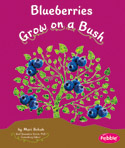 SCHUH, Mari. Apples Grow on a Tree. ISBN 978-1-4296-5279-7; ISBN 978-1-4296-6181-2. LC 2010025469. ————. Blueberries Grow on a Bush. ISBN 978-1-4296-5282-7; ISBN 978-1-4296-6183-6. LC 2010025470. ————. Carrots Grow Underground. ISBN 978-1-4296-5280-3; ISBN 978-1-4296-6185-0. LC 2010025471. ————. Lettuce Grows on the Ground. ISBN 978-1-4296-5281-0; ISBN 978-1-4296-6188-1. LC 2010025472. ————. Tomatoes Grow on a Vine. ISBN 978-1-4296-5278-0; ISBN 978-1-4296-6187-4. LC 2010025472. ea vol: 24p. (Pebble Books: How Fruits and Vegetables Grow Series). diags. photos. further reading. glossary. index. Web sites. CIP. Capstone. 2011. PLB $20.65; pap. $7.95. K-Gr 1—This cohesive collection clumps fruits and vegetables into categories according to their structure. Each title introduces the plant’s life cycle with a sequence of labeled, close-up photos. The remaining chapters cover each step in the sequence: planting the seed, growth, harvest, and seed formation. Apples and Blueberries mention pollination and dormancy while Carrots mentions the vegetable’s biennial pattern of seed formation. The titles conclude with examples of other fruits and vegetables with the same development pattern. Whimsical covers in jewel tones and well-chosen, full-page and spot photos add to the overall appeal. The small trim size makes these books more appropriate for individual use.
SCHUH, Mari. Apples Grow on a Tree. ISBN 978-1-4296-5279-7; ISBN 978-1-4296-6181-2. LC 2010025469. ————. Blueberries Grow on a Bush. ISBN 978-1-4296-5282-7; ISBN 978-1-4296-6183-6. LC 2010025470. ————. Carrots Grow Underground. ISBN 978-1-4296-5280-3; ISBN 978-1-4296-6185-0. LC 2010025471. ————. Lettuce Grows on the Ground. ISBN 978-1-4296-5281-0; ISBN 978-1-4296-6188-1. LC 2010025472. ————. Tomatoes Grow on a Vine. ISBN 978-1-4296-5278-0; ISBN 978-1-4296-6187-4. LC 2010025472. ea vol: 24p. (Pebble Books: How Fruits and Vegetables Grow Series). diags. photos. further reading. glossary. index. Web sites. CIP. Capstone. 2011. PLB $20.65; pap. $7.95. K-Gr 1—This cohesive collection clumps fruits and vegetables into categories according to their structure. Each title introduces the plant’s life cycle with a sequence of labeled, close-up photos. The remaining chapters cover each step in the sequence: planting the seed, growth, harvest, and seed formation. Apples and Blueberries mention pollination and dormancy while Carrots mentions the vegetable’s biennial pattern of seed formation. The titles conclude with examples of other fruits and vegetables with the same development pattern. Whimsical covers in jewel tones and well-chosen, full-page and spot photos add to the overall appeal. The small trim size makes these books more appropriate for individual use.
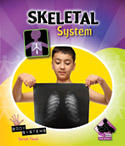 TIECK, Sarah. Circulatory System. ISBN 978-1-61613-497-6; ISBN 978-1-61758-987-4. LC 2010019665. ————. Digestive System. ISBN 978-1-61613-498-3; ISBN 978-1-61758-988-1. LC 2010019663. ————. Muscular System. ISBN 978-1-61613-499-0; ISBN 978-1-61758-989-8. LC 2010019664. ————. Nervous System. ISBN 978-1-61613-500-3; ISBN 978-1-61758-990-4. LC 2010019654. ————. Respiratory System. ISBN 978-1-61613-501-0; ISBN 978-1-61758-991-1. LC 2010019652. ————. Skeletal System. ISBN 978-1-61613-502-7; ISBN 978-1-61758-992-8. LC 2010019651. ea vol: 32p. (Body Systems Series). diags. photos. glossary. index. Web sites. CIP. ABDO/Buddy Bks. 2011. PLB $27.07; ebook $27.07. Gr 2-4—Succinct and to the point, these titles introduce the system, its location and operation; transition with a “Brain Food” spread with additional facts; present some related health issues; and conclude with “Healthy Body Files” that offer suggestions to keep the system working optimally. Spreads feature a page of text opposite photos, micrographs, and diagrams, whose captions are sometimes inadequate. Illustrated “Word of Mouth” and “How It Sounds” sidebars add facts and pronunciation guides, respectively.
TIECK, Sarah. Circulatory System. ISBN 978-1-61613-497-6; ISBN 978-1-61758-987-4. LC 2010019665. ————. Digestive System. ISBN 978-1-61613-498-3; ISBN 978-1-61758-988-1. LC 2010019663. ————. Muscular System. ISBN 978-1-61613-499-0; ISBN 978-1-61758-989-8. LC 2010019664. ————. Nervous System. ISBN 978-1-61613-500-3; ISBN 978-1-61758-990-4. LC 2010019654. ————. Respiratory System. ISBN 978-1-61613-501-0; ISBN 978-1-61758-991-1. LC 2010019652. ————. Skeletal System. ISBN 978-1-61613-502-7; ISBN 978-1-61758-992-8. LC 2010019651. ea vol: 32p. (Body Systems Series). diags. photos. glossary. index. Web sites. CIP. ABDO/Buddy Bks. 2011. PLB $27.07; ebook $27.07. Gr 2-4—Succinct and to the point, these titles introduce the system, its location and operation; transition with a “Brain Food” spread with additional facts; present some related health issues; and conclude with “Healthy Body Files” that offer suggestions to keep the system working optimally. Spreads feature a page of text opposite photos, micrographs, and diagrams, whose captions are sometimes inadequate. Illustrated “Word of Mouth” and “How It Sounds” sidebars add facts and pronunciation guides, respectively.
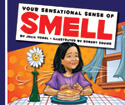 VOGEL, Julia. Your Sensational Sense of Hearing. ISBN 978-1-60954-286-3. LC 2010037846. ————. Your Sensational Sense of Sight. ISBN 978-1-60954-287-0. LC 2010037845. ————. Your Sensational Sense of Smell. ISBN 978-1-60954-288-7. LC 2010037847. ————. Your Sensational Sense of Taste. ISBN 978-1-60954-289-4. LC 2010037848. ————. Your Sensational Sense of Touch. ISBN 978-1-60954-290-0. LC 2010037849. ea vol: illus. by Robert Squier. 32p. (Your Sensational Senses Series). diags. illus. further reading. glossary. Web sites. CIP. The Child’s World. 2011. PLB $27.07. Gr 1-3—A mascot unique to the relevant sense, such as a musical note in Hearing, guides readers through each colorful volume offering opinions, asking questions, and showing up in illustrations. Content includes an introduction to the mascot and the topic, information on the sense, the parts of the body involved, and how the sense is communicated to the brain. Everyday examples are included along with problems and issues. A final page introduces the sense in other species, a potential springboard to further exploration, and includes a hands-on activity. The spreads include full-page illustrations that are often decorative only. Large type with not more than two paragraphs per page includes occasional oversized red onomatopoeic words. New vocabulary is in bold print. Solid additions where needed.
VOGEL, Julia. Your Sensational Sense of Hearing. ISBN 978-1-60954-286-3. LC 2010037846. ————. Your Sensational Sense of Sight. ISBN 978-1-60954-287-0. LC 2010037845. ————. Your Sensational Sense of Smell. ISBN 978-1-60954-288-7. LC 2010037847. ————. Your Sensational Sense of Taste. ISBN 978-1-60954-289-4. LC 2010037848. ————. Your Sensational Sense of Touch. ISBN 978-1-60954-290-0. LC 2010037849. ea vol: illus. by Robert Squier. 32p. (Your Sensational Senses Series). diags. illus. further reading. glossary. Web sites. CIP. The Child’s World. 2011. PLB $27.07. Gr 1-3—A mascot unique to the relevant sense, such as a musical note in Hearing, guides readers through each colorful volume offering opinions, asking questions, and showing up in illustrations. Content includes an introduction to the mascot and the topic, information on the sense, the parts of the body involved, and how the sense is communicated to the brain. Everyday examples are included along with problems and issues. A final page introduces the sense in other species, a potential springboard to further exploration, and includes a hands-on activity. The spreads include full-page illustrations that are often decorative only. Large type with not more than two paragraphs per page includes occasional oversized red onomatopoeic words. New vocabulary is in bold print. Solid additions where needed.
Grades 5 and Up
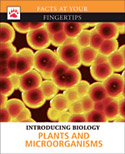 EASON, Sarah, ed. Animals and Humans. ISBN 978-1-936333-03-5. LC 2010015169. ————. Ecology. charts. ISBN 978-1-936333-04-2. LC 2010015184. ————. Evolution. charts. chron. ISBN 978-1-936333-01-1. LC 2010015185. ————. Plants and Microorganisms. ISBN 978-1-936333-02-8. LC 2010015180. ————. Reproduction and Genetics. ISBN 978-1-936333-00-4. LC 2010015186. ea vol: 64p. (Facts at Your Fingertips: Introducing Biology Series). diags. illus. photos. further reading. glossary. index. Web sites. CIP. Brown Bear Bks. 2011. PLB $35.65. Gr 8 Up—Each of these attractive, reference-style introductions begins with an overview and then looks more closely at the various facets of the subject, including controversial issues such as stem-cell research. The chapters are discrete, allowing researchers to focus only on what they need. Groundbreaking discoveries and major scientists are introduced as the evolution of scientific thinking is explained. Descriptions of scientific processes are accompanied by labeled and numbered diagrams. These, along with color photos, highlighted inset pieces offering examples, further detail, and thought provoking “Try This” activities extend the content. Unfortunately, the glossaries that conclude each chapter and the indexes lack detail, there are minor typos, and the books have occasional British usages. Additional.
EASON, Sarah, ed. Animals and Humans. ISBN 978-1-936333-03-5. LC 2010015169. ————. Ecology. charts. ISBN 978-1-936333-04-2. LC 2010015184. ————. Evolution. charts. chron. ISBN 978-1-936333-01-1. LC 2010015185. ————. Plants and Microorganisms. ISBN 978-1-936333-02-8. LC 2010015180. ————. Reproduction and Genetics. ISBN 978-1-936333-00-4. LC 2010015186. ea vol: 64p. (Facts at Your Fingertips: Introducing Biology Series). diags. illus. photos. further reading. glossary. index. Web sites. CIP. Brown Bear Bks. 2011. PLB $35.65. Gr 8 Up—Each of these attractive, reference-style introductions begins with an overview and then looks more closely at the various facets of the subject, including controversial issues such as stem-cell research. The chapters are discrete, allowing researchers to focus only on what they need. Groundbreaking discoveries and major scientists are introduced as the evolution of scientific thinking is explained. Descriptions of scientific processes are accompanied by labeled and numbered diagrams. These, along with color photos, highlighted inset pieces offering examples, further detail, and thought provoking “Try This” activities extend the content. Unfortunately, the glossaries that conclude each chapter and the indexes lack detail, there are minor typos, and the books have occasional British usages. Additional.
 PARKER, Steve. Circulatory System. ISBN 978-1-84898-328-1. LC 2010925189. ————. Digestive and Reproductive Systems. ISBN 978-1-84898-329-8. LC 2010925190. ————. Muscular and Skeletal Systems. ISBN 978-1-84898-330-4. LC 2010925191. ————. Nervous System. ISBN 978-1-84898-327-4. LC 2010925193. ea vol: 32p. (Inside the Human Body Series). charts. diags. illus. photos. glossary. index. New Forest Press. 2011. PLB $28.50. Gr 6-8—At a glance, the striking covers and multitude of visual elements in these books will attract browsers but upon closer inspection serious readers will be frustrated. The main narratives are too short for in-depth treatments. Some terms are not explained and multi-faceted topics, such as the human reproductive and endocrine systems, are glossed over. Diagrams and visuals are sometimes poorly placed or indecipherable. Labels are insufficient and hard to read. A limited glossary, an index with unreliable entry points, and a scattered collection of facts in sidebars and photo captions provide little support for the main texts.
PARKER, Steve. Circulatory System. ISBN 978-1-84898-328-1. LC 2010925189. ————. Digestive and Reproductive Systems. ISBN 978-1-84898-329-8. LC 2010925190. ————. Muscular and Skeletal Systems. ISBN 978-1-84898-330-4. LC 2010925191. ————. Nervous System. ISBN 978-1-84898-327-4. LC 2010925193. ea vol: 32p. (Inside the Human Body Series). charts. diags. illus. photos. glossary. index. New Forest Press. 2011. PLB $28.50. Gr 6-8—At a glance, the striking covers and multitude of visual elements in these books will attract browsers but upon closer inspection serious readers will be frustrated. The main narratives are too short for in-depth treatments. Some terms are not explained and multi-faceted topics, such as the human reproductive and endocrine systems, are glossed over. Diagrams and visuals are sometimes poorly placed or indecipherable. Labels are insufficient and hard to read. A limited glossary, an index with unreliable entry points, and a scattered collection of facts in sidebars and photo captions provide little support for the main texts.

For the youngest learners, Capstone’s “Pebble Books: How Fruits and Vegetables Grow” is a solid choice. Peas and Pine Trees are the strongest of Gareth Stevens’s “Watch Plants Grow!” The Child’s World’s “Your Sensational Senses” is refreshing in that itdoesn’t shy away from correct terminology. In the cycles series, Crocodile, Opossum, and Honeybee are the best of Gareth Stevens’s “Nature’s Cycles”while Eggs, Legs, and Wings, and Hide and Seek Moon are the strongest in Capstone’s “First Graphics: Nature Cycles.” ABDO’s “Body Systems”tries hard but it’s an optional choice. Minor quibbles aside, interesting information and appearance make Sea-to-Sea’s “Your Body Inside and Out” worth considering. The avoidance of common technical terms in Heinemann’s “Inside My Body”is puzzling; skip its Bones, Pulse, and Periods. Brown Bear Books’s “Facts at Your Fingertips: Introducing Biology” and Britannica Eductional’s “Health and Disease in Society”are adequate additions if you need those topics.
Read Series Made Simple, School Library Journal's guide to the latest series nonfiction
The job outlook in 2030: Librarians will be in demand
The job outlook in 2030: Librarians will be in demand
ALREADY A SUBSCRIBER? LOG IN
We are currently offering this content for free. Sign up now to activate your personal profile, where you can save articles for future viewing






Add Comment :-
Be the first reader to comment.
Comment Policy:
Comment should not be empty !!!